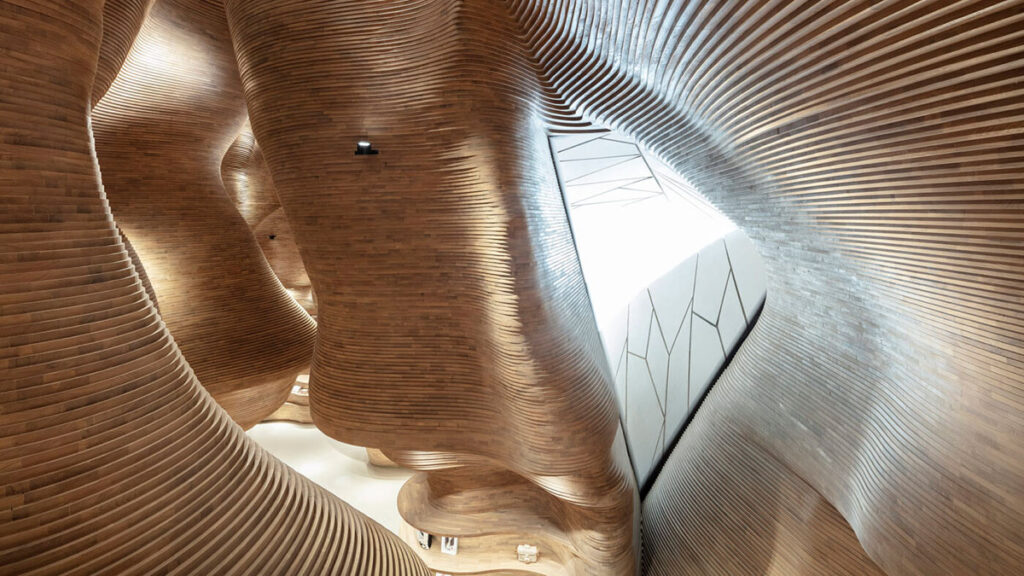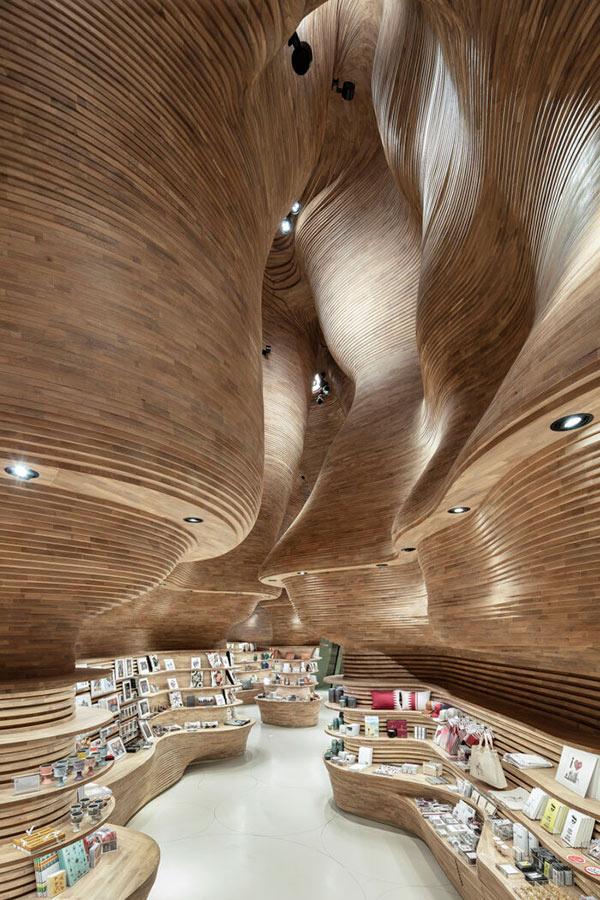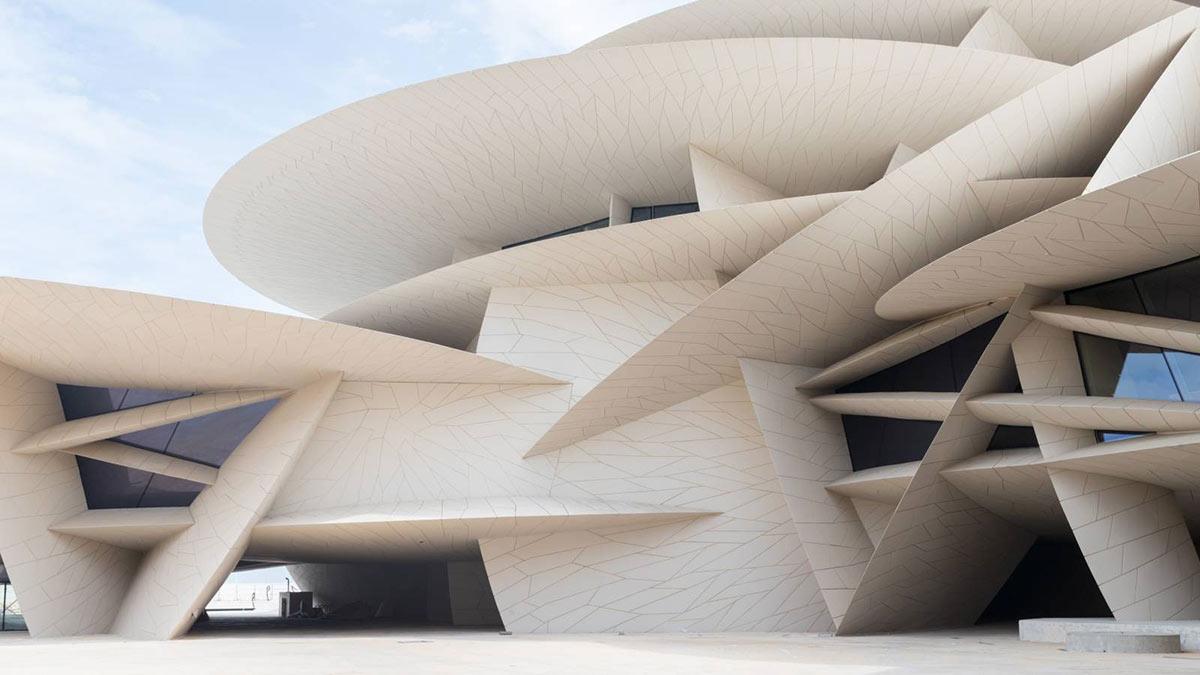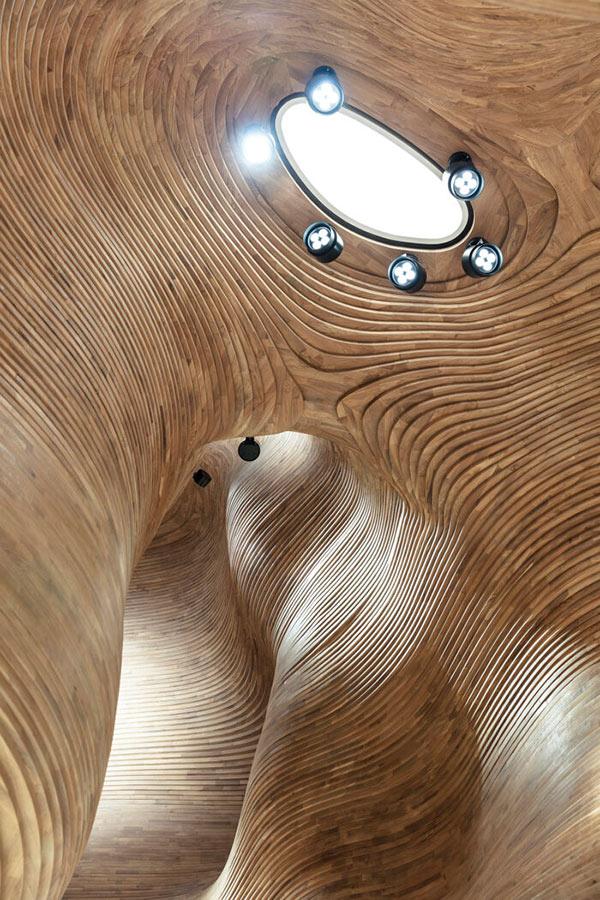Shopping inside a timber canyon
As many as 40,000 pieces of wood had to be fitted together for the gift shop in the National Museum of Qatar. The inspiration behind this award-winning interior design was supplied by a miracle of nature in Qatar’s desert.
A design “grandmaster” was chosen by the Persian Gulf emirate to create an institution that celebrates its cultural heritage and landscape: the National Museum of Qatar in Doha. For this project, Pritzker prize-winner Jean Nouvel produced an avant-garde building inspired by the desert rose, an ornate formation of crystal clusters with overlapping discs primarily found in dry desert regions. And architect Koichi Takada continued this analogy with nature for the interior design of the gift shop.
The Cave of Light
While developing the designs, Koichi Takada visited the Dhal Al Misfir (Cave of Light) near the village of Rawdat Rasida. The cave is one of the most famous sights in this desert country. It is 40 metres deep, and its fibrous gypsum crystals emit a faint phosphorescent glow.
“The gift shop design makes use of soaring, curved and layered wooden surfaces and does indeed recall a desert cave with natural light coming from above, as is the case in the Dahl Al Misfir,” explain Koichi Takada Architects. “Like the building itself, our spaces draw on the desert landscape of Qatar for their inspiration.”
A wooden puzzle with 40,000 pieces
Curved pieces of timber lead the observer’s eye upwards along the walls of the shop. It almost seems as though you are standing at the bottom of a narrow canyon. In a precisely tailored custom design, display shelves are integrated into the curvature of the walls. 3D modelling software enabled pinpoint accuracy during planning.
The entire timber panelling consists of 40,000 pieces of prefabricated oak. Since this material is scarce in Qatar, it was especially imported from Europe. Nevertheless, its sourcing from sustainable forestry has been emphasized by the developers. Each individual part of the interior cladding is unique and had to be snugly fitted in its intended position.
Assembling the timber was a task that required the skill of experts who were especially brought in from Italy. Industrial designer and master carpenter Claudio Devoto fitted together the huge puzzle by hand. “We worked in this instance with the complex architectural design of Jean Nouvel, inspired by an enlarged vision of the desert rose,” say the architects.
Architecture with humanist values
Besides the gift stop, the Australian bureau Koichi Takada Architects created a number of other spatial concepts in the new museum, including three restaurants. The project description clarifies: “Each interior space offers a fragment of the Qatari history, that aims to enhance and fulfil both, cultural and memorable experience for museum visitors.”
The architects’ interior concept has attracted international attention, winning numerous prizes such as the Architizer A+ Award and the Prix Versailles.
Here we say, form follows nature.
Koichi Takada, architect
The architectural firm focuses on creating architecture that is at one with nature. “Here we say, form follows nature,” they report. “Our organic architecture is infused with humanistic values. We’re working towards creating a better partnership between the global ecosystems of nature and civilisation.”
Europe’s new Bauhaus
The crisis caused by the Covid-19 pandemic has not least triggered a change in awareness. “Post Covid-19, we are more conscious of living more healthily and we believe integrating nature is the key,” the architects reveal. Their commitment to the Bauhaus principle “form follows function” is shown by their design for the Sunflower House.
This carbon-positive residential design is the showcase project of the European Bauhaus launched by EU Commission President Ursula von der Leyen. Like a sunflower, the solar panels on the house follow the direction of the sun. An auspicious prototype for Europe’s green future.
Text: Gertraud Gerst
Translation: Rosemary Bridger-Lippe
Photos: Tom Ferguson, Koichi Takada Architects, Jean Nouvel, Iwan Baan



